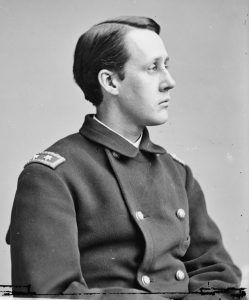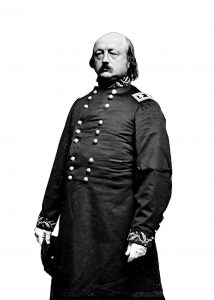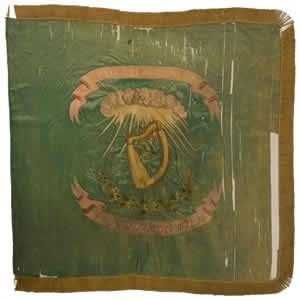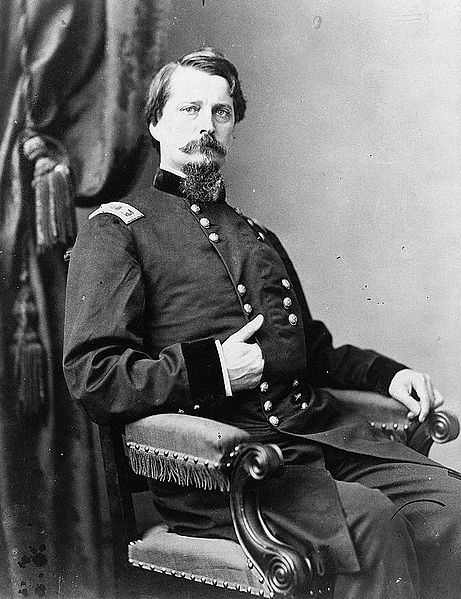Petersburg Day Two: Thursday, June 16, 1864
On the night of June 15, P.G.T. Beauregard sent Robert E. Lee a letter, which was received at 2:00 a.m., explaining the situation and asking him to cover the Howlett Line. Unfortunately, the letter failed to convey the desperation of the situation. Beauregard explained to Lee that Petersburg was under attack, but so far, he could confirm only the presence of X and XVIII Corps. As of yet, Beauregard’s men had not encountered II Corps, so they could not confirm if the Army of the Potomac was at Petersburg. Lee acted with the information he had and sent George E. Pickett’s division to cover the Bermuda Hundred lines. Lee also decided to go to Bermuda Hundred and review the situation himself.
Hancock had at least 20,000 troops near Petersburg at his immediate disposal. George Meade was expected to arrive shortly to command the Army of the Potomac, but until then it was Hancock’s show. However, the morning of June 16 saw only light fighting. Hancock ordered David Birney to stage a reconnaissance in force to find a weak spot in the lines for a future attack. Birney selected Thomas W. Egan’s brigade. The attack at first carried a portion of the lines but Beauregard counterattacked. In the fighting Egan was severely wounded along with his second-in-command, Augustus Warner. Further assaults were called off while Johnson’s division filed into the right flank.
Ulysses Grant left City Point around 10:00 a.m. to visit Petersburg. He congratulated Smith for his efforts and was hopeful that victory would be achieved. He ordered Meade to carry out an all-out attack, although he also warned Meade to guard his flank. Meade arrived at Petersburg around 2:00 p.m. He sent John G. Barnard and Cyrus Comstock, on loan from Grant’s staff, to scout the ground. They advised that a concentrated attack would meet success. Francis Barlow recommended a flank attack. In the end, Meade decided on a concentrated blow on Beauregard’s center with Hancock’s II Corps rather than a general assault, as had been attempted disastrously at Cold Harbor. Barlow’s flank attack proposal was sound, but the intense heat meant IX Corps, the outfit on the flank, was arriving in an exhausted condition on Meade’s left. . Meade personally discussed the assualt with Hancock and Burnside; he did not consult with Smith, probably since the two men detested each other. Meade wanted an attack on Hare House Hill, the woods due south of the hill, and the Shand House, which was straddled by hills, ravines, and streams. It would be a frontal assault against an entrenched position.

On the Confederate side, Lee crossed the James at 9:40 a.m. He knelt in prayer upon reaching the south bank and then set up his headquarters at Drewry’s Bluff. Eppa Hunton, a brigade commander, observed that on June 16 “Lee was in a furious passion.” [1] This was likely because Lee was still uncertain where Meade was located, his cavalry having failed to penetrate Wilson’s screen. Beauregard’s messages on June 16 varied from dire predictions that Petersburg would fall to a request for men to launch a counterattack. It was a confusing situation.
Meanwhile, Benjamin Butler had noted Johnson’s absence and ordered forward his command. They scooped up a haul of prisoners. His men wrecked the Richmond-Petersburg Railroad and tore up telegraph lines. Adelbert Ames’ division, recently arrived from Petersburg, destroyed telegraph wires. Butler also asked for reinforcements from Meade. Grant sent two divisions of VI Corps.

Around noon Pickett’s men engaged Butler’s troops. Richard Anderson, Pickett’s superior, notified Lee who dispatched Charles Field’s division. In a running battle, Pickett forced Butler back to his old lines. Grant and Butler now became cautious. Grant ordered Butler to withdraw to the captured Confederate lines at Bermuda Hundred. Butler instead withdrew to his old lines, leaving only pickets in the captured Rebel works.
Meade meanwhile made his late afternoon attack, but losses were heavy as compact attack columns were shredded by artillery. Some Union troops made it to the Confederate lines but they could not storm them. The famous Irish Brigade took particularly heavy losses. James E. McGee, commander of the 69th New York, was wounded. The Irishmen pressed on and pierced the main Rebel lines, as some of Henry Wise’s Virginians broke. The 17th North Carolina shifted to cover the breech. During the attack Patrick Kelly, the brigade’s commander, was shot in the head and died instantly. Kelly had fought in nearly every major battle in the eastern theater since First Bull Run, leading the brigade at Gettysburg. His death caused many to weep, from privates all the way to members of Meade’s staff.

Edwin B. Houghton, of the 17th Maine, aptly described the attack as “sublimely awful.”[2] Of the seven brigades that actively assaulted, four lost their commanders. Combined with Egan’s loss in the morning, Hancock saw nearly half of his brigade commanders fall in one day. Among the junior officers in II Corps, seven captains and nine lieutenants died. Casualties for the evening attack were estimated to be 2,000 total. Although Meade considered these losses to have “not been great,” reporter David Power Conyngham, of the New York Hearld, was more accurate when he said “thousands of brave men were ruthlessly sacrificed.”[3] The casualties were on par with those suffered by II Corps in its more famous attack at Cold Harbor.
The Union still held a considerable numerical advantage and had captured parts of the Confederate defenses. Beauregard believed there was “much vigor being displayed by the Federals.”[4] June 16 had been a Confederate victory, but it gave Meade an excellent point from which to strike the next day. To counter this, Beauregard ordered numerous night attacks designed both to regain the lost portion of his lines and to add stress and strain to the Union forces. The lost lines were not recovered, but the attacks had the desired effect on Federal morale.
Meanwhile, Beauregard ordered David Harris, his able chief engineer, to set up a defensive line behind his current position. Harris was assisted in this by John Postell, an accomplished civil engineer from Georgia. The two men mapped out a line, but it needed to be fortified before the Rebels could withdraw from their current positions. The new line would be constructed by slaves, militia, and men from Stephen Elliott’s South Carolina brigade.

Meanwhile, the leading elements of Kemble Warren’s V Corps arrived on the field. Warren was placed in position by Comstock, who even after Cold Harbor had moved about camp pounding his fist into his palm and yelling “Smash ‘em up! Smash ‘em up!”[5] Comstock though showed caution on June 16. He placed Warren behind IX Corps and was worried about a Confederate attack.
The morning of June 17 would see roughly 35,000 Union troops confronting no more than 14,000 Confederates holding an exposed line, with some 20,000 Union troops on the way. Furthermore, Meade had been informed by Samuel P. Lee, the local naval commander, that thousands of Rebels were at Deep Bottom, just north of the James River. This showed that most of Lee’s army was out of position. If the Federals could not gain victory on June 16, they seemed assured to win on June 17.
[1] Eppa Hunton, Autobiography of Eppa Hunton (Richmond: William Byrd Press, 1933), 86.
[2] Edwin B. Houghton, The Campaigns of the Seventeenth Maine (Portland: Short and Loring, 1866), 202.
[3] D. P. Conyngham, The Irish Brigade and Its Campaigns (New York: William McSorley & Company, 1867), 456;
[4] P.G.T. Beauregard , Battles and Leaders of the Civil War, Vol. IV, 542.
[5] James H. Wilson, Under the Old Flag (New York: D. Appleton and Co., 1912), 445.

Nope again. That Bumbling Clausewitzian Trio of Grant/Meade/Butler couldn’t choreograph a Bronze One Foxtrot routine after Lee had dropped victory into their lap. One can’t continue to play Alphonse and Gaston with Lee and wait for the lightbulb to go off over Mars Robert’s head. The tactical results of Grant’s previous hamfisted tactical “genius” were demonstrated in the near comatose response of the engaged corps, in their timorous refusal to grasp opportunity. The author of the blog contrasted this with the Confederate tactical commanders’!quick and vigorous responses, even in the face of vastly superior numbers.
The AOP was not the same fighting machine that marched into the Wilderness in May. Hard marching and casualties had taken their toll. At the time that they needed everyone to be at their peak and give a little extra there was nothing to give. The ANV was not any better off but they had the interior lines and just had to defend.
My response is simply this, assaulting entrenched positions requires a 3:1 advantage. Furthermore, Vauban outnumbered his opponents time and again. He won many sieges with more casualties than the defender. The French see him as a military genius since he redefined siege warfare because he limited the amount of life lost during sieges (refer to Ottoman sieges for those results). Grant was also not in charge of the tactical decisions of his corps commanders. Although, one could argue he should be as it would have been more successful. Don’t get lost in the tactical minutiae of the Petersburg Campaign. The big picture is that Lee’s army was unable to maneuver after they were fixed inside the Confederate works. An unusable army might as well be taken out of the war. It is the neophytes that do not understand the military significance of Petersburg. Military theory is necessary to understand Grant’s eastern campaigns.
Unable to maneuver? First of all Nate, you conveniently forget that Lee never tried to maneuver strategically after the Mine Run Campaign, where his numbers were more favorable. Second, he couldn’t maneuver away from Richmond, not because of Grant’s hamfisted strategy, but because he could not leave his source of munition supplies. He was tied to his railroad nexus. He did, however, successfully detach Jubal Early”s Corp to rout Hunter and terrify the administration. Third, he consistently blunted Grant’s attacks on the siege lines throughout the summer and fall, using AP Hilll in particular as his fire brigade. It was no more an “unusable army” than those of the Austrians in the Quadrilateral of northern Italy, which fixed Napoleon in place, or Wellington in the Ne Plus Ultra lines. Defense can serve an offensive purpose, particularly in a political sense. Had other theaters not fallen to Union arms, Lee’s defense of his interior lines against horrific odds would have been seen by future strategists as the key to at least Lincoln’s political defeat.
This is a lot to unpack. First of all, Lee detached Early before his army was fixed in Petersburg. Secondly, success in other theatres depended on holding Lee’s army in Petersburg; otherwise, Lee could have detached his forces to other theatres of war. Third, the valley campaign became part of Grant’s overall plan (taking advantage of Early’s force in the valley). It contributed to Lincoln’s reelection. There is also some evidence to speculate the capture of Fort Harrison led to Lincoln’s reelection as well. Grant knew he could not maneuver away from Petersburg or Richmond because his army relied on it. Why not take advantage of your enemy’s weaknesses? It would be silly attack their strengths. Lee did not win battles on the Petersburg front through staying behind breastworks. Lee preferred the attack, but Grant prevented him from taking back the initiative. Grant kept gaining ground and kept enveloping the city. Lee could not hold back their attacks or find another way to impair their siege lines. He tried in March and failed. He even tried on June 26 not long after the Second Offensive. Lee had as much tactical success as Grant did when on the attack. It proves that grand tactics and strategy matter much more than small tactical matters. Do not get bogged down in those tiny details. The big picture is that Grant fixed Lee in place and made him watch the Confederacy burn around him.
As Lee said: “Just a matter of time.”